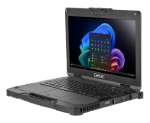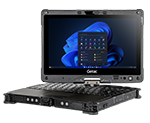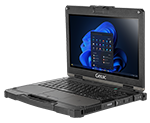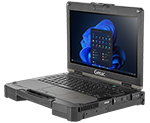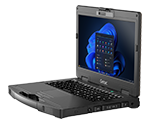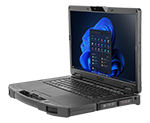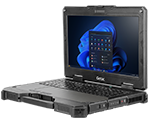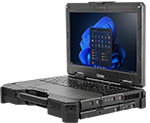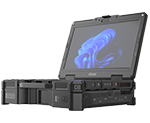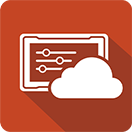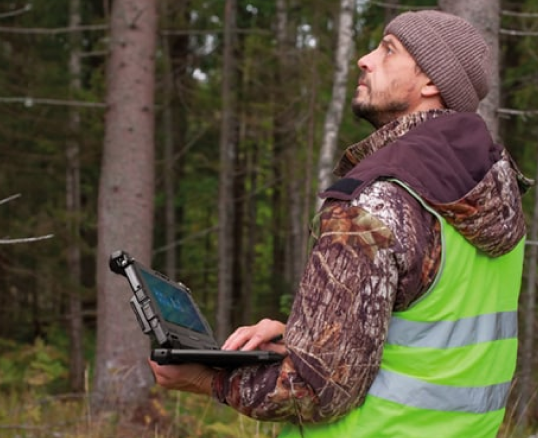GIS Surveying | Definition, Importance & Applications
Explore GIS surveying's role in geospatial analysis, its applications across industries, Getac Solutions' innovations, and emerging trends and challenges.
WHAT IS GEOGRAPHIC INFORMATION SYSTEM (GIS) SURVEYING?
Geographic Information System surveying, or GIS Surveying, is the integration of computer software, hardware, and data acquisition techniques to capture, manage, analyze, and display geospatial data in a visual format.
The Significance of
GIS Surveying
GIS in surveying plays a pivotal role in shaping the modern world. It's not just about creating maps but it's an essential tool for efficiency planning, improved decision making, and heightened situational awareness. Whether it's for resource allocation, development projects, or emergency response, understanding geographic space through GIS helps organizations and governments make informed decisions.
GIS SURVEYING APPLICATIONS

Land Surveying and Property Management
Land surveys are crucial for establishing property boundaries, and GIS technology enhances this by offering precise measurements and detailed information for land surveys. This allows for efficient property management and supports large-scale projects that require accurate spatial information.

Disaster Management and Emergency Response
Real-time data collection through GIS technology enables quick responses to disasters by identifying specific geographical areas and locations that need immediate attention.

Environmental and Natural Resource Management
Geographical data, when mapped through GIS, aids in monitoring and managing natural resources, thereby contributing to sustainable development and ecological preservation.

Urban Planning and Development
GIS work in urban planning ensures efficient utilization of spaces, taking into account various geographical changes and helping in creating sustainable cities.

Transportation and Infrastructure Planning
From scheduling timetables to maintenance schedules, GIS supports transportation and infrastructure projects by providing a detailed view of surrounding geographic features and other locations through topographic surveys.

Archaeological and Cultural Heritage Surveying
The past can be mapped in the present. GIS aids archaeologists in capturing data from excavation sites, ensuring the preservation of our cultural heritage.
Getac Solutions for GIS Surveying
Getac has strategically positioned itself as a player in GIS Surveying by addressing the needs of the sector.
One of the standout features of Getac laptops and tablets is their ability to support powerful mobile GIS systems, allowing utility fieldworkers and forestry professionals to access surveying and mapping schematics directly on their devices.
Boasting 4G LTE, dedicated GPS, and Wi-Fi connectivity, Getac’s solutions ensure that field personnel are always connected. Whether it's accessing mapping databases or other vital topographic data for mobile GIS applications, Getac's seamless connectivity guarantees swift retrieval and updating of both geographic and tabular data, irrespective of whether the users are stationed remotely or ensconced in their offices.
Venturing outdoors with tech devices often means battling visibility issues, but with Getac's LumiBond® 2.0 technology, this concern is efficiently addressed. These devices promise a superior touchscreen experience, ensuring crystal clear visibility even under the glaring sun.
But it's not just about advanced features; durability is equally pivotal.
We understand that as a land surveyor, you work in challenging conditions, from swamps to rocky outcrops on mountain sides, where the durability and resistance of your equipment can make or break a survey.
Designed to endure, Getac rugged devices can weather a variety of harsh conditions, be it searing temperatures, jolting vibrations, omnipresent dust, or even the occasional downpour and accidental drops.
These devices aren't just rugged in design but also meet military-grade standards, ensuring they hold their own in very challenging field settings.
For professionals keen on optimizing operations, Getac's Device Monitoring System is a boon. GIS experts can now remotely oversee their devices, ensuring the software remains current, and any emerging issues are promptly addressed. This proactive approach minimizes downtime, enhancing overall efficiency for those in the field.
Furthermore, Getac's partnership with 1Spatial offers an extra layer of innovation. 1Spatial, with its renowned geospatial technology, anchors a cutting-edge web-based mapping and asset management solution. Currently, the collaboration between Getac and 1Spatial is available in France and UK.

Getac and Leica are making planning and maintenance work easier and more reliable
Getac K120 rugged tablet used to 3D scan and model Lugang Mazu Temple, preserving its valuable cultural assets

Leica Geosystems is revolutionizing underground mapping work with Getac
Despite the immense potential of GIS, the industry faces a few substantial challenges:
RELATED SOLUTIONS

Tablets | Fully Rugged | 11.6-Inch | Windows
Getac F110
The F110 was named the Best Rugged Tablet in 2021 by ZDNet and in 2023 by TechRadar. It has a slim form factor and an 11.6-inch FHD screen.

Tablets | Fully Rugged | 12.5-Inch | Windows
Getac K120
The K120 is a multi-functional tablet with 12.5-inch FHD screen. It is engineered to work through a variety of usage modes and accessories.

Laptops | Fully Rugged | 13.3-Inch | Windows
Getac B360
The B360 is PCMag Editor's Choice winner and Best Rugged Laptop awardee in 2023. It features a 13.3-inch FHD screen with 1,400 nits LumiBond display.
Android Configuration at Scale
GETAC deployXpress
A cloud-based deployment, configuration, and provisioning solution that brings scalability, precision, and over-the-air convenience to Getac Android ownership.
Reducing the Risk of Device Downtime
Getac Monitoring
Monitoring helps you know which devices are optimally working, and which are not, ensuring you have the technology you need when you need it.

One GPS, Multiple Applications.
Getac VGPS Utility
By replicating the physical GPS data to multiple virtual COM ports, VGPS helps ensure operational efficiency. One GPS, multiple applications.
CONCLUSION
GIS surveying, with its ability to manage and display geographical data in a detailed manner, has reshaped modern geospatial analysis. From land surveying to urban planning, GIS has provided a method to visualize, analyze, and act upon complex geographic and spatial information.
As technology moves forward, GIS methodologies are not just changing, but also becoming increasingly intertwined with other groundbreaking technologies, bringing about a transformation in how GIS is applied across various sectors.
Getac will continue to support GIS surveying. By offering advanced tools and capabilities, Getac can help GIS professionals to harness the power of geographic information systems for different purposes, facilitating improved communication, analysis, and decision-making.
ADDITIONAL RESOURCES

Factors Impacting the Utilities Sector Today and Tomorrow

How Rugged Mobile Devices Improve Customer Service in Utilities and Field Repair

Understanding Vegetation Management and its Impact on Utilities Sector

